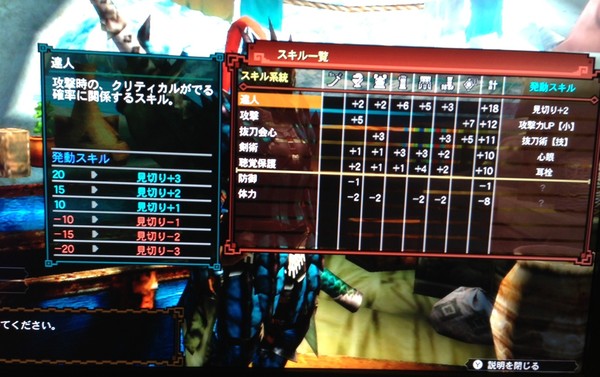
Monster Hunter 3 Ultimate – Localization Notes Part 2
Jan 29, 2013 // Andrew Alfonso
Hi all, this is Andrew again, a Localization Director at Capcom Japan. Hope everyone had a great holiday season! I spent most of my holiday playing the Japanese version of Monster Hunter 3 Ultimate. Over the holiday break I was trying to build an Azure Rathalos armor set, but those jewels… they just wouldn’t drop! I might have to talk to the director and see what we can do about those darn drop rates… ^^; After clearing a bunch of Quests with other players online, I finally got the jewels that I needed for my set, plus I got an awesome talisman to boot.
Here’s the armor set and weapon that my hunter has, a lightning-based sword made from the new Lagiacrus subspecies (we’ll talk about his name later!) and my Azure Rathalos armor set, with a talisman that gives me +5 to Attack and +7 to Critical Draw. I also have Earplugs, Mind’s Eye and a small Attack Power Up skill with this set.
I wanted the Critical Draw skill pretty bad, so I forged a couple of Jewels to bring me over the maximum needed, but those jewels also brought my Critical Eye skill down one level (Azure Rathalos’ full armor set gives you Critical Eye +3 naturally). It’s a downside I’m willing to take though, because now I have arguably the three best Blademaster skills for my hunter!
I’m going to start off the New Year by writing about a trio of monsters that made their debut in the Japan-exclusive Monster Hunter Portable 3 rd , as well as the poster boy for Monster Hunter 3 Ultimate! If you haven’t read my first blog entry about the localization of Monster Hunter 3 Ultimate yet, you can check it out right here !
Great Wroggi
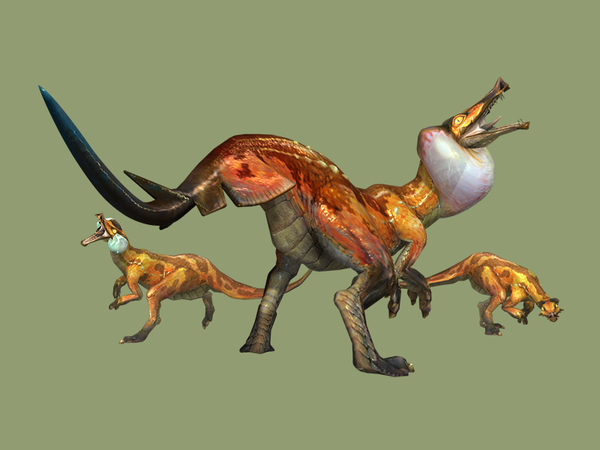
Daring importers who sunk their teeth into Monster Hunter Portable 3rd must have been thinking that we were going to localize this new monster into “Froggi”. Well, those people thought wrong! Since we already had Great Jaggi and Great Baggi in Monster Hunter Tri, this name was relatively easy to localize. We were vehemently against using the name “Froggi” because people would automatically visualize a frog in their minds, which this monster obviously is not! The Monster Hunter team agreed with us on this point, so we instead settled on a unique name that sounded like the original Japanese name.
Duramboros/Rust Duramboros
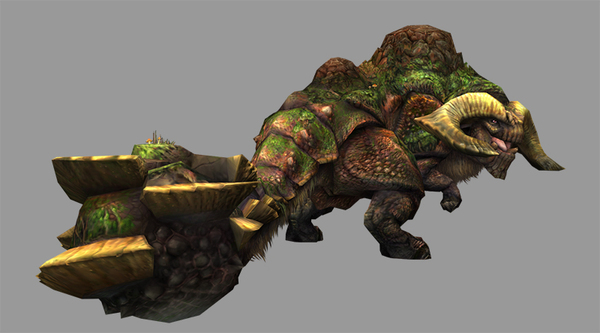
The Japanese name for this monster is Doboruberuku, which is a combination of multiple words from different languages. You can imagine that creating such a combination would be pretty difficult in Japanese or in any other language for that matter!
For the localized version, we wanted to do our best to follow the Japanese name, so we based Duramboros’ name around three words: Duro (Italian for “hard”), Ambulat (Latin for “walk”) and Oros (Greek for “mountain”) to create the mighty Duramboros ! Rwaaaar! Lucky enough, Duramboros also wields a pair of rock-hard horns similar to a ram, so the “ram” part also emphasizes what makes this monster so fearsome!
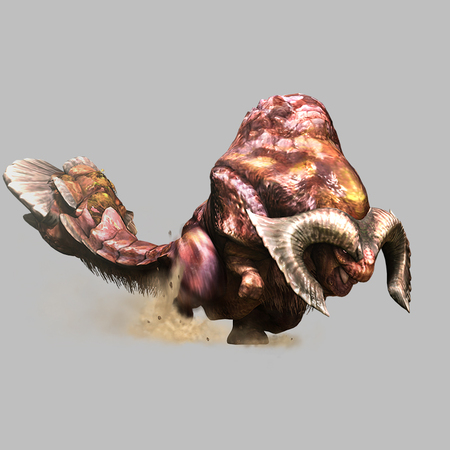
We named the subspecies Rust Duramboros due to the darkish red hue of the monster, and also because its tail looks more like a rusted axe compared to the hammer-like tail of the main species. Some of our other proposed subspecies names included “Redcloak Duramboros” and “Gritstone Duramboros”, both of which take inspiration from not only the color of the monster, but also the Sandy Plains locale that it usually inhabits.
In the European-language localizations, Rust Duramboros is translated as Duramboros rouille in French, Rost-Duramboros in German, Duramboros rugginoso in Italian, and Duramboros herrumbroso in Spanish.
Nibelsnarf
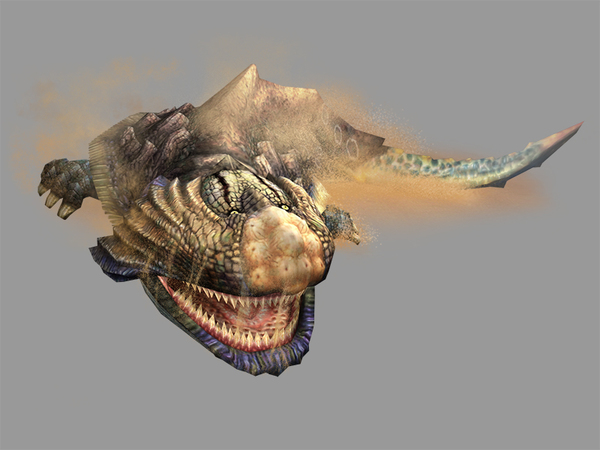
Like Lagombi, which I wrote about last time, the voracious Nibelsnarf was a difficult name to settle on. We initially wanted a name that’d be loosely related to Gobul, since they have similar characteristics, such as “swimming” through locales and being able to shoot projectiles from their mouths. We thought up some synonyms for “gobble” (everyone knows that Gobul is supposed to be pronounced like “gobble”, right?), and settled on Nibel (“nibble”) as our first choice. We thought it was an ironic name because this monster does anything but nibble at its food! At first, the Monster Hunter team felt it didn’t sound quite right, so we added the word “snarf” at the end, which, for you non-native English speakers out there, is slang for devouring something rapidly. Nibble nibble, snarf snarf! This was something that the team felt was a good fit for the monster, so we went with that.
The other name we came up with for this monster was Boccavore, which took the Italian word for mouth and added the –vore suffix to the end, but that name didn’t exactly convey what we wanted it to; it inferred that the monster ate mouths instead of having a gigantic mouth. After talking with our in-house European localization staff – specifically our Italian translators — we agreed that the Boccavore name sounded a bit odd, and stuck with Nibelsnarf.
Brachydios
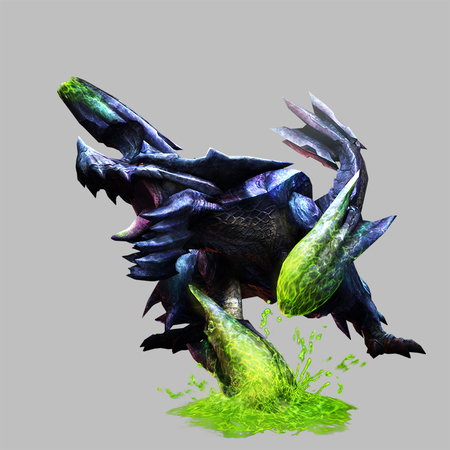
The localized name for Monster Hunter 3 Ultimate’s poster boy hasn’t changed significantly from the original Japanese name. The name is a combination of the Latin word for arm (Bracchium) and Obsidian, which we thought was the perfect match, so all we did was slightly alter the spelling so that it’s easier to read for an international audience. I wish I could talk more about this monster, but naming this big boy was fairly easy. As they say, don’t mess with a good thing!
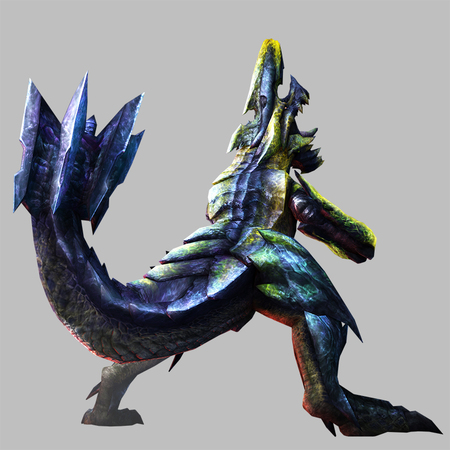
Aside from naming Brachydios, we also had to come up with a new name for the status associated with this beast. If you check out some of the CG trailers for Monster Hunter 3 Ultimate, you’ll notice that the green substance on Brachydios has a thicker consistency than most liquids but it’s not quite solid, and that it sticks to surfaces very well. Given these properties, we decided to call the new status Slime/Slimeblight . It doesn’t have the immediate impact that the Japanese term does (literally translated as “Blast”) but we feel that new hunters will immediately understand what Slimeblight is as opposed to something like Blastblight.
For the European localizations, Slimeblight is localized as Fléaupoisse in French, Schleimschaden in German, Imbrattamento in Italian, and Plaga de baba in Spanish.
That’s it for now! Please leave your comments below or post them on the official Monster Hunter forum!
Thanks!
-
Brands:Tags:
-

Loading...
Platforms:
